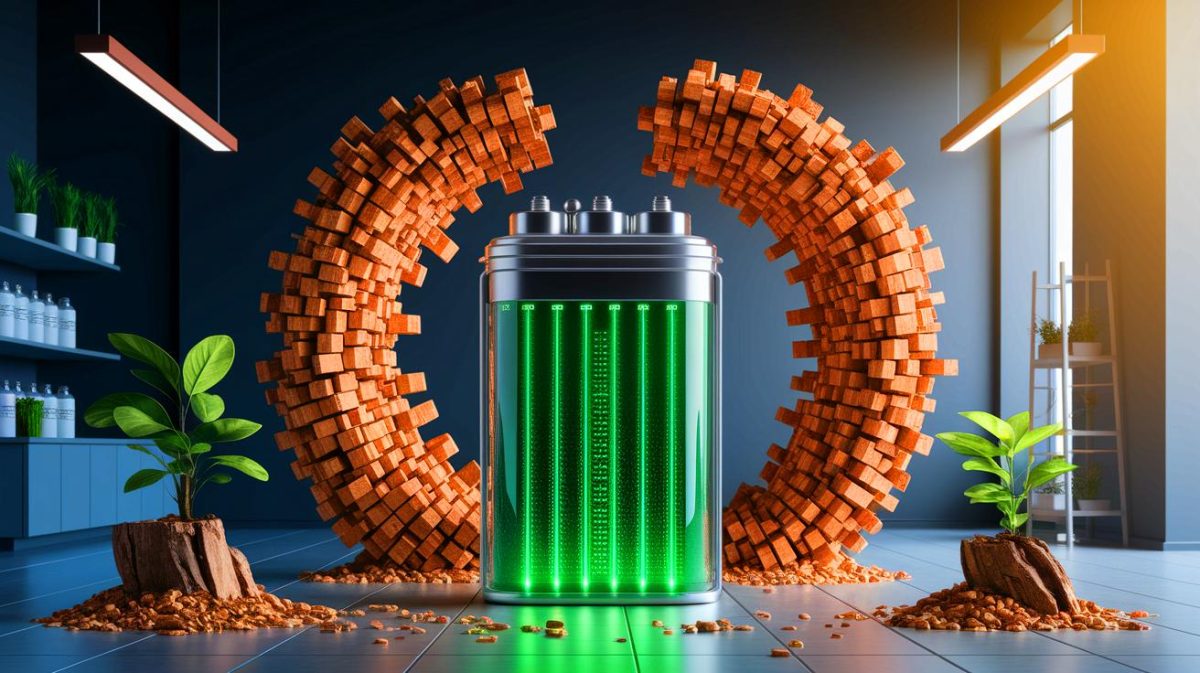| IN A NUTSHELL |
|
In a world increasingly reliant on efficient and sustainable energy solutions, researchers are tirelessly searching for innovative ways to harness renewable resources. A groundbreaking development in the field of energy storage has emerged from the University of the Basque Country (UPV/EHU), where scientists have created a hybrid supercapacitor using carbon derived from sawmill waste wood particles. This new technology promises not only to revolutionize how we store energy but also to enhance sustainability by utilizing abundant biomass resources. Let’s delve deeper into the fascinating world of biomass-powered capacitors and their potential to transform the energy landscape.
Biomass-Powered Capacitors: A Sustainable Solution
Modern society’s escalating energy demands necessitate the adoption of sustainable storage solutions that minimize environmental impact. Traditionally, energy storage technologies have been dominated by lithium-ion batteries (LIBs) and supercapacitors (SCs), each with its own set of advantages and limitations. Supercapacitors are renowned for their high power output but suffer from rapid self-discharge, while lithium-ion batteries boast high energy density yet degrade over time. To address these challenges, researchers have been exploring the potential of lithium-ion capacitors (LICs), which combine the best of both technologies.
The UPV/EHU team’s development of a cost-effective LIC using carbon sourced from Pinus radiata waste is a testament to the potential of biomass as a sustainable resource. By substituting expensive and environmentally taxing graphite with readily available biomass, they have crafted high-performance electrodes using carbon derived from local biomass. This innovative approach not only enhances the performance of lithium-ion capacitors but also underscores the importance of sustainable materials in energy storage.
Eco-Friendly Batteries: Merging Technologies
Batteries and supercapacitors play pivotal roles in energy storage, each offering unique advantages. Supercapacitors excel in delivering high power output for short durations, while batteries are designed to store more energy over extended periods. However, supercapacitors are not ideal for long-term energy supply. By merging the strengths of both technologies, the researchers have created a hybrid lithium-ion device that retains the robustness and rapid charge-discharge capabilities of a supercapacitor while offering the high-power energy storage of a battery.
This hybrid device’s success hinges on the use of various forms of carbon carefully sourced from biomass, particularly insignis pine. The research emphasizes the importance of selecting the right biomass to ensure the effectiveness of carbon in energy storage applications. By employing cost-effective additives and maintaining synthesis temperatures below 1,292°F (700°C), the team prioritized sustainability and cost-effectiveness throughout the production process.
The Role of Local Biomass in Energy Storage
The UPV/EHU research underscores the immense potential of local biomass as a cost-effective and eco-friendly alternative for lithium-ion capacitors. Their innovative approach combines the advantages of high energy density and rapid charge-discharge capabilities, offering a promising solution for high-power energy storage applications. The system they developed provides an impressive 105 Wh/kg at 700 W/kg and retains an astonishing 60 percent capacity after 10,000 charge cycles.
The positive electrode, composed of the same carbon material, boasts a large surface area, while the negative electrode stores substantial energy without reliance on expensive chemicals. This configuration highlights the potential of biomass-derived materials to revolutionize energy storage technologies. The researchers’ findings, published in the Journal of Power Sources, pave the way for further exploration of sustainable energy solutions.
Future Prospects for Biomass-Based Energy Storage
The UPV/EHU team’s work exemplifies the promising opportunities that lie in harnessing biomass-derived materials for energy storage. By reducing dependency on conventional materials and emphasizing sustainability, this research opens doors to greener alternatives in high-power energy storage. The team’s dedication to developing innovative solutions underscores the need for continued research and collaboration in the quest for eco-friendly energy technologies.
As the world transitions toward a more sustainable future, the potential of biomass-powered capacitors cannot be overstated. Their ability to combine high energy density, rapid charge-discharge capabilities, and sustainability makes them a compelling option for a wide range of applications, from electric vehicles to wind turbines. What other groundbreaking innovations could emerge from the marriage of renewable resources and cutting-edge technology?
Did you like it? 4.4/5 (26)






Wow, this is amazing! Who knew wood waste could be so powerful? 🌲🔋
Can someone explain how this is different from regular lithium-ion batteries?